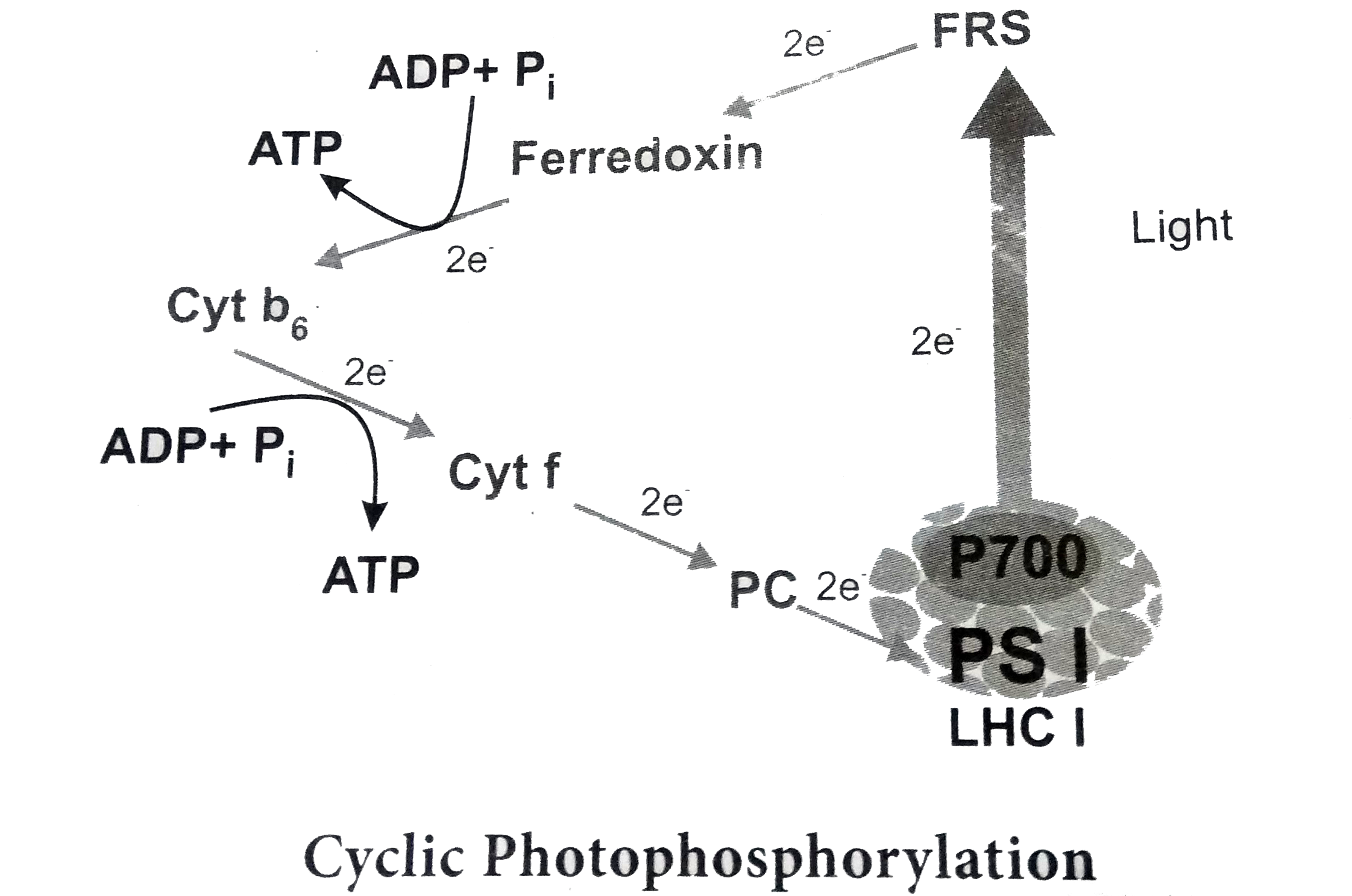Explain cyclic photosphosphorylation .Solution in Tamil
Cyclic photophosphoryalation refes to the electrons ejected form the pigment system I (Photosystem I) and agin cycled back to the PSI . When the photons activate P 700 reaction centre photosytem II is activated . Eectrons are raised to the high energy level. The primary electron acceptor is Ferredoxin Reducing Substance (FRS) which transfers electrons to Ferredoxin (Fd), Plastquinone (PQ), cytochrome b6 - f complex, Plastocyanin (PC) and finally back to cholorphyll P700 (PS I) . During this movement of electrons Adenosine Di Phosphate (ADP) is phosphorylated , by the addition of inorganic phosphate and generates Adenosine Tri Phosphate (ATP). Cyclic electron transport produces only ATP and there is no NADPH+H+ formation . At each step of electron transport , lose potential energy and is used by the transport chain to pump H+ ions across the thylakoid membrance . The proton gradient triggers ATP formation in ATP synthase enzyme situated on the thylakoid membrane . The proton gradient triggers ATP formation in ATP synthase enzyme situated on the thylakoid membrane. Photosystem I need light of longer wave longer (>p700nm) . It operates under low high intensity , less CO2 and under anaerobic conditions which makes it considered as earlier in evolution .

Topper's Solved these Questions
- PHOTOSYNTHESISBOOK - FULL MARKSCHAPTER - PHOTOSYNTHESISEXERCISE - ADDITION QUESTIONN SOLVED (HIGHER ORDER THINKING SKILLS )
7 Videos
- PHOTOSYNTHESISBOOK - FULL MARKSCHAPTER - PHOTOSYNTHESISEXERCISE - ADDITION QUESTIONN SOLVED (SHORT ANSWER TYPE QUESTIONS )
12 Videos
- ORGAN AND ORGAN SYSTEMS IN ANIMALS BOOK - FULL MARKSCHAPTER - ORGAN AND ORGAN SYSTEMS IN ANIMALS EXERCISE - ADDITIONAL QUESTIONS SOLVED (III Answer the following Questions)
35 Videos
- PLANT GROWTH AND DEVELOPMENT BOOK - FULL MARKSCHAPTER - PLANT GROWTH AND DEVELOPMENT EXERCISE - Higher Order Thinking Skills (HOTs)
6 Videos
Similar Questions
Succelents are know to keep their stomata closed during the day to check transpiration . How do they meet their photosyntheitc CO2 requirements ?
View SolutionList the radiations present in electromagnetic spectrum.
View SolutionClassify earthworms based on their ecological strategies.
View SolutionA farmer grows cucumber plants in his field. He wants to increase the number of female flowers in them. Which plant growth hormone can be applied to achieve this/
View Solutionसमचक्रीय एवं विषमचक्रीय यौगिकों को उदाहरण सहित स्पष्ट कीजिए।
View Solutionचक्रीय प्रक्रम को समझाइए।
View Solutionऊष्मागतिकी के प्रथम नियम के आधार पर चक्रीय प्रक्रम की व्याख्या कीजिए।
View SolutionExplain the cyclic photophosphorylation with schematic reoresentation .
View Solutionचक्रीय प्रकाश फॉस्फोरिलीकरण अभिक्रिया को समझाइये।
View Solutionचक्रिक एवं अचक्रिक फोटोफॉस्फोरिलेशन में अन्तर स्पष्ट कीजिए|
View SolutionExplain non-cyclic photophosphorylation.
View SolutionExplain cyclic photosphosphorylation .
View SolutionExplain (i) Cyclic silicates, (ii) Ino silicates.
View SolutionExplain about the cyclic structure of fructose ?
View SolutionExplain the cyclic structures of glucose and fructose.
View Solution
